Aritra Das
Grokking Modular Polynomials
Jun 05, 2024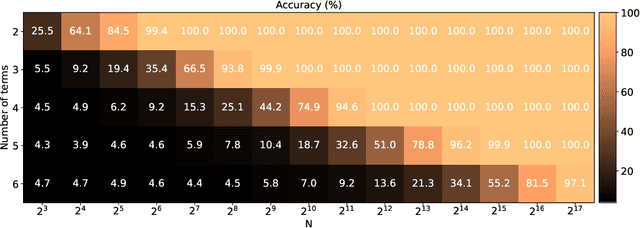


Abstract:Neural networks readily learn a subset of the modular arithmetic tasks, while failing to generalize on the rest. This limitation remains unmoved by the choice of architecture and training strategies. On the other hand, an analytical solution for the weights of Multi-layer Perceptron (MLP) networks that generalize on the modular addition task is known in the literature. In this work, we (i) extend the class of analytical solutions to include modular multiplication as well as modular addition with many terms. Additionally, we show that real networks trained on these datasets learn similar solutions upon generalization (grokking). (ii) We combine these "expert" solutions to construct networks that generalize on arbitrary modular polynomials. (iii) We hypothesize a classification of modular polynomials into learnable and non-learnable via neural networks training; and provide experimental evidence supporting our claims.
Learning to grok: Emergence of in-context learning and skill composition in modular arithmetic tasks
Jun 04, 2024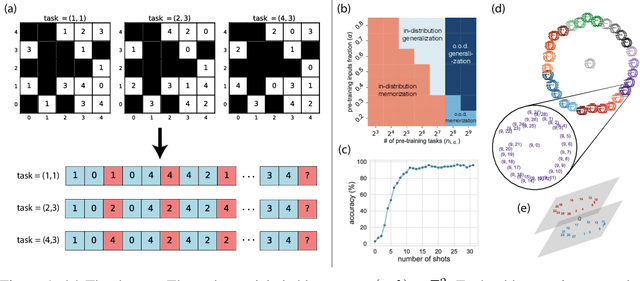

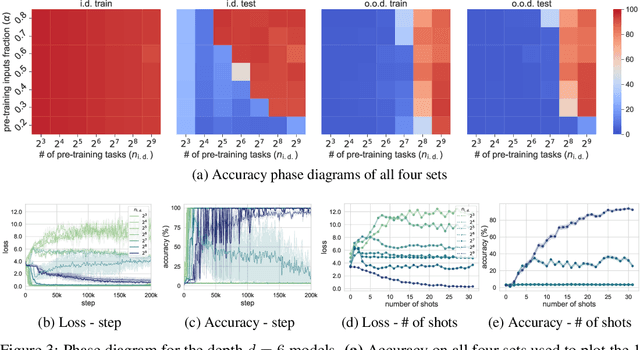
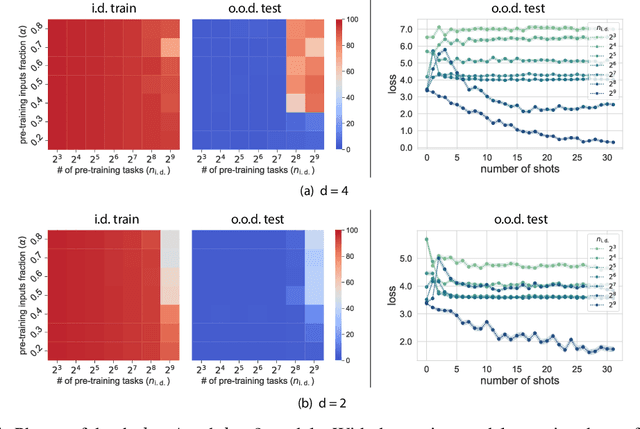
Abstract:Large language models can solve tasks that were not present in the training set. This capability is believed to be due to in-context learning and skill composition. In this work, we study the emergence of in-context learning and skill composition in a collection of modular arithmetic tasks. Specifically, we consider a finite collection of linear modular functions $z = a \, x + b \, y \;\mathrm{mod}\; p$ labeled by the vector $(a, b) \in \mathbb{Z}_p^2$. We use some of these tasks for pre-training and the rest for out-of-distribution testing. We empirically show that a GPT-style transformer exhibits a transition from in-distribution to out-of-distribution generalization as the number of pre-training tasks increases. We find that the smallest model capable of out-of-distribution generalization requires two transformer blocks, while for deeper models, the out-of-distribution generalization phase is \emph{transient}, necessitating early stopping. Finally, we perform an interpretability study of the pre-trained models, revealing the highly structured representations in both phases; and discuss the learnt algorithm.
To grok or not to grok: Disentangling generalization and memorization on corrupted algorithmic datasets
Oct 19, 2023Abstract:Robust generalization is a major challenge in deep learning, particularly when the number of trainable parameters is very large. In general, it is very difficult to know if the network has memorized a particular set of examples or understood the underlying rule (or both). Motivated by this challenge, we study an interpretable model where generalizing representations are understood analytically, and are easily distinguishable from the memorizing ones. Namely, we consider two-layer neural networks trained on modular arithmetic tasks where ($\xi \cdot 100\%$) of labels are corrupted (\emph{i.e.} some results of the modular operations in the training set are incorrect). We show that (i) it is possible for the network to memorize the corrupted labels \emph{and} achieve $100\%$ generalization at the same time; (ii) the memorizing neurons can be identified and pruned, lowering the accuracy on corrupted data and improving the accuracy on uncorrupted data; (iii) regularization methods such as weight decay, dropout and BatchNorm force the network to ignore the corrupted data during optimization, and achieve $100\%$ accuracy on the uncorrupted dataset; and (iv) the effect of these regularization methods is (``mechanistically'') interpretable: weight decay and dropout force all the neurons to learn generalizing representations, while BatchNorm de-amplifies the output of memorizing neurons and amplifies the output of the generalizing ones. Finally, we show that in the presence of regularization, the training dynamics involves two consecutive stages: first, the network undergoes the \emph{grokking} dynamics reaching high train \emph{and} test accuracy; second, it unlearns the memorizing representations, where train accuracy suddenly jumps from $100\%$ to $100 (1-\xi)\%$.
Combining Multi-level Contexts of Superpixel using Convolutional Neural Networks to perform Natural Scene Labeling
Mar 14, 2018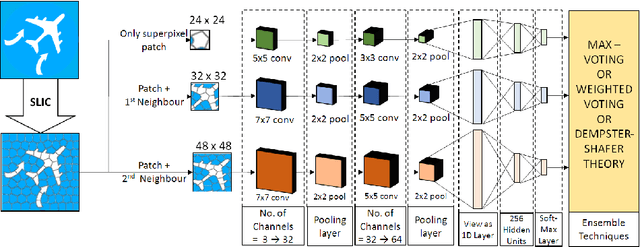

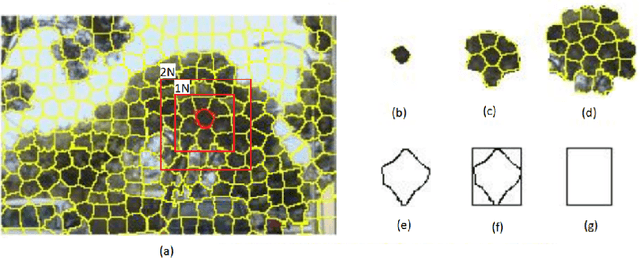

Abstract:Modern deep learning algorithms have triggered various image segmentation approaches. However most of them deal with pixel based segmentation. However, superpixels provide a certain degree of contextual information while reducing computation cost. In our approach, we have performed superpixel level semantic segmentation considering 3 various levels as neighbours for semantic contexts. Furthermore, we have enlisted a number of ensemble approaches like max-voting and weighted-average. We have also used the Dempster-Shafer theory of uncertainty to analyze confusion among various classes. Our method has proved to be superior to a number of different modern approaches on the same dataset.
 Add to Chrome
Add to Chrome Add to Firefox
Add to Firefox Add to Edge
Add to Edge